- Very fine tapestry (9 to 10 threads/cm) representing a child with his face in profile, his body facing forward, holding a mask. The young boy, on one knee, wears a ribboned headdress decorated with blue stones. It appears in a network of plant ornaments (foliage of laurel tori, oak branches, beaded acanthus leaves, flowered bases, natural flowers). The vigor of these motifs, their elegant shapes imbued with lightness as well as the symmetrical composition governed by a border with numerous notches refer to the “Regence” style (1st third of the 18th century).
- The central character displays a particularly careful design, colors of a great diversity of shades, even if the latter have today lost their shine. The fabric itself is enriched with gold threads, which attest to a level of great luxury. A closer observation allows us to see that a retraction has been carried out. The central part (the child with the mask) is a fragment which was placed in a surrounding area designed on purpose and woven a posteriori.
- It is therefore a captivating tapestry in several respects:
- Firstly for the prestige of the initial order to which the fragment refers, that of an order from the superintendent of the King's Buildings for the apartments of Louis XIV in Versailles, which explains the presence of gold threads/d money, the quality of the design, the colors and the finesse of the weaving.
- Secondly, for the vicissitudes that this weaving has experienced; a door was woven, had to be exposed and for some unknown reason was damaged, cut, one or more fragments were “saved” and other hands, knowing the value of the fragment, came to weave a surrounding “tailor-made” to give a second life to this fragment. - The Door of “Saturn or Winter” belongs to a hanging of 8 pieces called “Portières des Dieux”, they represent the Four Seasons and the Four Elements personified by one of the gods of Olympus: Venus, Spring – Ceres , Summer – Bacchus, Autumn – Saturn, Winter – Juno, Air – Diana, Earth – Neptune, Water – Jupiter, Fire. All doors have the same decorative layout; they are composed of a portico decorated with festoons of flowers, surrounded by birds, animals, zodiac signs and attributes defining the season or the element, under which the god or goddess is installed. At the bottom, a base which occupies the width of the tapestry, supports in the middle a base furnished with various accessories between two children. For that of Saturn-L'Hiver, the two children (our fragment corresponding to the child on the right) surround a lit tripod placed on a velvet carpet. The child on the left is holding a wooden tongs to catch the marotte held by a monkey dressed in blue pants. The other child (present on the fragment) is holding a mask (a reference to night). On the consoles, on the right a mannequin, a mask, a hairstyle and a cat; on the left, a lantern, a mask and feathered headdresses.
- This hanging was ordered by Jules Hardouin-Mansart, newly appointed superintendent of the king's buildings (1699-1708), from the ornamentalist and painter of the king's painter Claude III Audran (1658-1734) in 1699, the same year of the reopening of the Manufacture des Gobelins, in order to renew the doors used in the royal houses. With this royal commission Mansart instigated a new artistic policy. These tapestries, a new adaptation of the genre of decoration called Grotesques or Arabesques, were very successful and were produced in numerous series. They give an example of Audran's style which played a decisive role in "the emancipation of decorative art" (A. Chastel) at the end of the reign of Louis XIV. The compositions are by Claude III Audran, the figures (goddesses, gods, children) by Louis Boulogne and Corneille. The grotesque motifs that make up this series take up motifs brought back into fashion by Jean Bérain (complex and fantastic motif ordered according to the symmetry of the composition) while proposing an evolution; an expression of naturalistic advantage in the treatment of foliage, flowers and animals. According to the accounts of the Bâtiments du Roi, the first series of portières (1700-1713) were ordered for the king's apartments in Versailles. Building on its success, this hanging was rewoven several times until the last years of the century at the Gobelins factory to decorate other royal residences and for diplomatic gifts. The eight models, constantly copied, had to be repainted several times. The dimensions, backgrounds and attributes have been modified, these variants making it possible to fix the date of weaving of the tapestries. The first hangings are all the more precious as they are authentic specimens of the portières and executed according to the original models.
- The in-depth observation* of our fragment allows us to link this weaving to the very first bass-leaf hangings enhanced with gold woven from 1700 to 1703 (cf. Paris, Mobilier National inv. GMTT-164-000, https:// collection.mobilier-national.fr/objet/GMTT-164-000).
* a technical file available at the gallery will be given to the buyer.
Bibliography:
- Fenaille (Mauritius), General condition of the tapestries of the Gobelins factory from its origin to the present day, 1600-1900. Part 1, p. 11 to 19 - Vittet (Jean), The Gobelins in the Age of Enlightenment. A golden age of royal manufacturing, Paris, 2014, p.31, fig.14
- Favreau (Marc), "The reopening of the Manufacture des Gobelins in 1699 and the order for tapestries from Claude III Audran: the Portières des Dieux (1699) and the Mois grotesques (1709)" in Aurélia Gaillard, ed. The Year 1700. Proceedings of the conference of the Research Center on the European 17th century (1600–1700). Michel de Montaigne University, Bordeaux III, January 30–31, 2003. P. 240 to 257.
To note : When Audran died, the Swedish collector Cronstedt purchased his studio assets, comprising more than 2,000 drawings. They now belong to the collections of the Nationalmuseum in Stockholm. Link to the drawing by Claude III Audran for the Portière de Saturne-L’Hiver


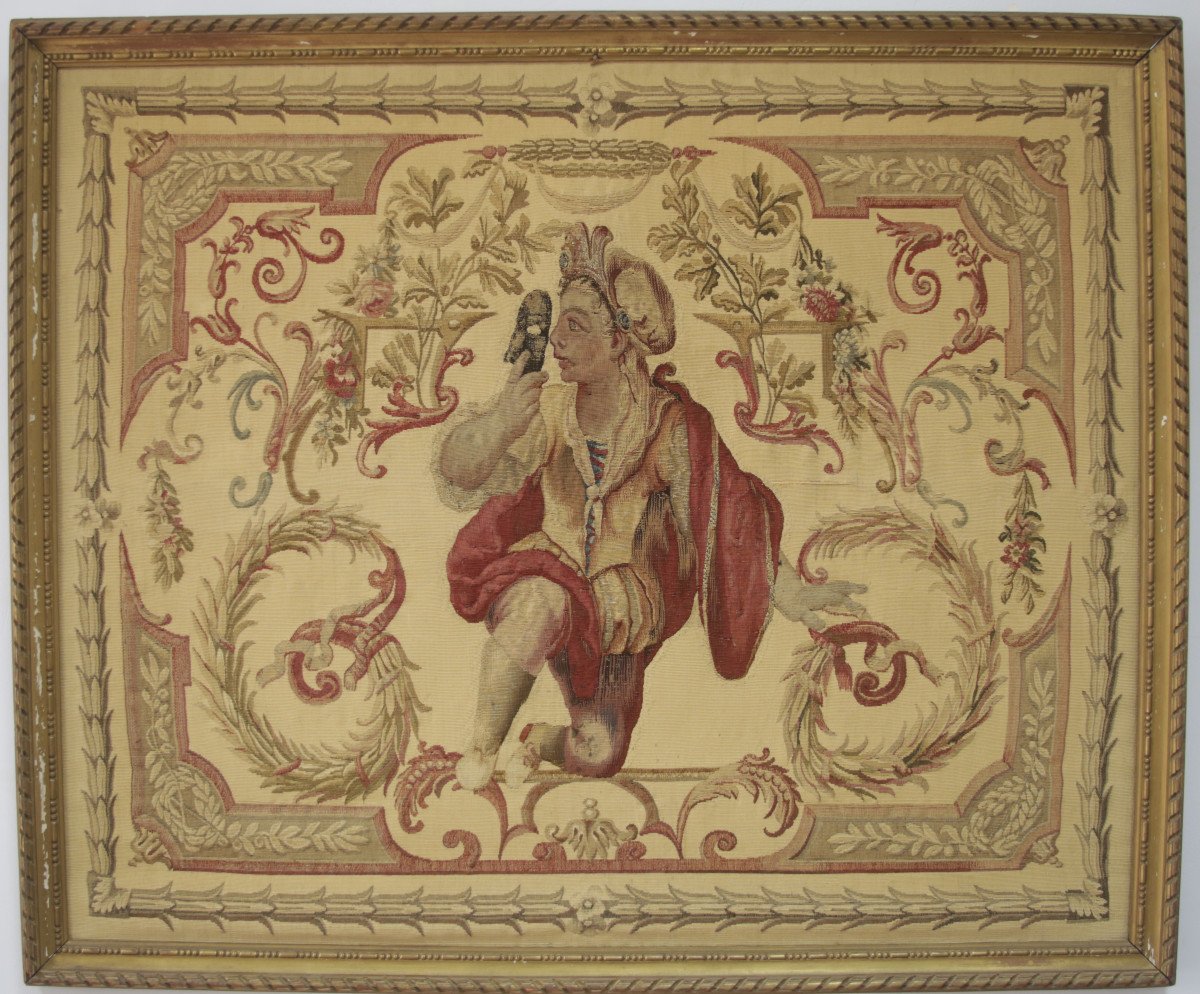












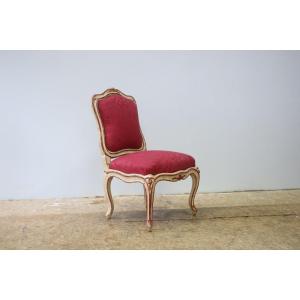


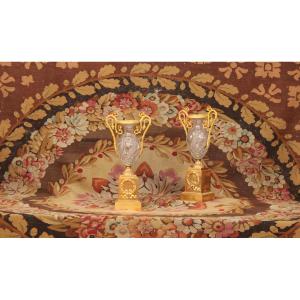
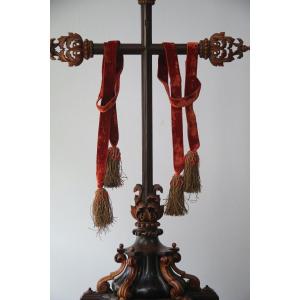




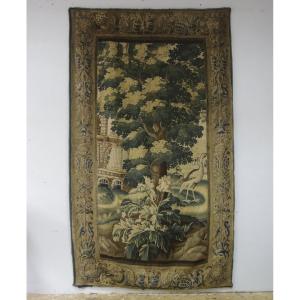
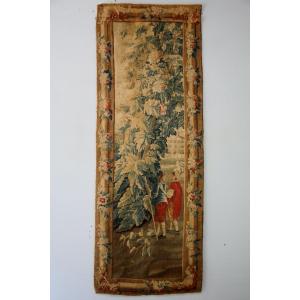


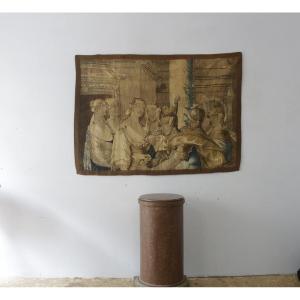
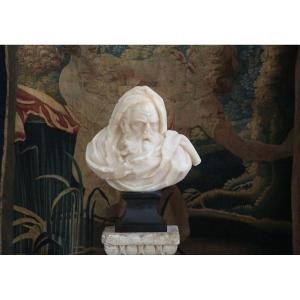

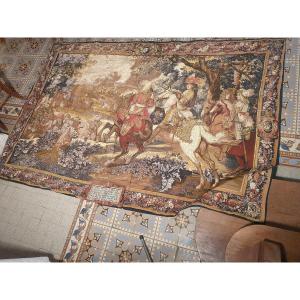
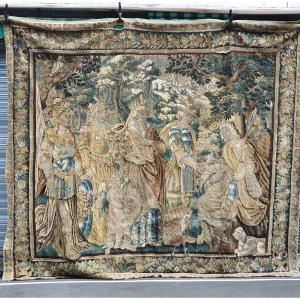




 Le Magazine de PROANTIC
Le Magazine de PROANTIC TRÉSORS Magazine
TRÉSORS Magazine Rivista Artiquariato
Rivista Artiquariato